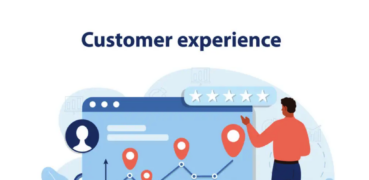Exploring Different SaaS Pricing Models: Strategies for 2024 and Beyond

Pricing in SaaS (Software as a Service) is a critical factor that can greatly impact customer acquisition, retention, and profitability. As the SaaS industry continues to evolve, pricing models have diversified to meet different customer needs and maximize value. In 2024, SaaS companies must consider various pricing angles to stay competitive, balance profitability, and provide flexibility to users. Let’s explore some key SaaS pricing strategies and angles that businesses can leverage to optimize growth.
1. Flat-Rate Pricing: Simplicity Above All
Flat-rate pricing offers simplicity by providing one consistent price for a service, regardless of the customer’s usage or feature preferences. This model works best for companies offering a single product tier or where a simple solution fits all customer segments.
- Pros: Easy to understand, predictable revenue, clear communication of value.
- Cons: Limited flexibility, may not capture the full value from different customer segments.
Example: A project management tool may charge a flat monthly fee of $50, providing access to all features without tiered limitations.
2. Tiered Pricing: Balancing Feature Access with Cost
Tiered pricing allows customers to choose from various plans, often divided into “basic,” “standard,” and “premium” levels, with each tier unlocking additional features. This model is highly popular because it caters to different user groups with varying needs.
- Pros: Accommodates different customer needs, offers upsell opportunities, encourages upgrades.
- Cons: Complex messaging, risks customer confusion if tiers are not well-differentiated.
Example: A CRM software may offer a basic plan at $20 for small businesses, a mid-tier plan at $50 for growing businesses, and an enterprise option at $200 with advanced analytics.
3. Usage-Based Pricing: Pay-As-You-Go Flexibility
Also known as metered or consumption-based pricing, this model charges customers based on their actual usage of the software. This approach is particularly effective for businesses with fluctuating needs or where value correlates with usage.
- Pros: Fair for customers, highly scalable, aligns with value delivered.
- Cons: Harder to predict revenue, potential for price sensitivity during high-usage periods.
Example: A cloud storage provider might charge $0.10 per GB of storage used, enabling businesses to pay more as their storage needs grow.
4. Per-User Pricing: Simple and Scalable
Per-user (or per-seat) pricing is a widely used model, especially in business software like collaboration tools. Customers pay a fee based on the number of users or employees accessing the service.
- Pros: Easy to understand, scales directly with customer growth, predictable.
- Cons: Could become expensive for larger teams, some customers might limit user counts to manage costs.
Example: A team collaboration platform charges $10 per user per month, so a company with 10 users pays $100.
5. Freemium Model: Driving Growth Through Free Access
The freemium model offers a free, basic version of the product with limited features, encouraging users to upgrade to paid plans for additional functionality. This model is an effective strategy for increasing brand awareness and attracting users with low upfront commitment.
- Pros: High user acquisition, builds brand loyalty, funnel for future conversions.
- Cons: Low conversion rates if the free tier is too good, can lead to higher support costs.
Example: A SaaS provider might offer free access to core features for individual users, while charging businesses for collaboration, integrations, and advanced analytics.
6. Per-Feature Pricing: Customization with Flexibility
Per-feature pricing allows customers to select and pay for only the features they need, creating a highly customizable pricing structure. This works well for SaaS solutions with a diverse feature set, where not every customer needs every tool.
- Pros: High flexibility, caters to niche needs, offers precise pricing.
- Cons: Complexity in pricing structure, harder for customers to choose the right combination of features.
Example: An analytics tool might offer core data visualization for $30/month, with additional charges for AI-powered insights, real-time data, or user access reports.
7. Hybrid Pricing Models: Combining Approaches
Many SaaS companies are adopting hybrid models that blend multiple pricing strategies to appeal to a broader range of customers. For example, a SaaS product might offer a basic tier with per-user pricing and charge additionally based on usage or features.
- Pros: Maximum flexibility, adaptable to different customer segments.
- Cons: Requires complex billing systems, could confuse customers if not communicated clearly.
Example: A customer support platform might charge $20 per user but add usage-based fees for advanced features like real-time reporting or integration with other platforms.
8. Value-Based Pricing: Aligning Price with Perceived Value
In value-based pricing, the price is set based on how much customers are willing to pay for the benefits they perceive from the product. This model requires an in-depth understanding of your customer’s needs and pain points.
- Pros: Maximizes revenue potential, aligns price with customer satisfaction.
- Cons: Requires market research and ongoing customer feedback, complex to implement.
Example: A business intelligence tool may charge more for industries like finance, where insights could drive significant ROI, compared to non-profit sectors that are more price-sensitive.
9. Outcome-Based Pricing: Paying for Results
Outcome-based pricing ties the cost of the service to the customer achieving specific outcomes, such as an increase in sales or efficiency gains. This model places risk on the vendor but can drive significant customer trust and retention when outcomes are achieved.
- Pros: High customer confidence, aligns vendor incentives with customer success.
- Cons: Risk of underpayment if outcomes are hard to measure, complex contracts.
Example: A marketing SaaS platform might only charge based on the percentage of revenue growth generated from campaigns managed through their software.
Conclusion: Finding the Right Pricing Model for SaaS
Choosing the right pricing model is essential for SaaS companies to grow, attract diverse customer segments, and ensure profitability. The decision should be based on the nature of the product, customer preferences, and the value the software delivers. As we look to 2024, flexibility and adaptability will be key, as SaaS companies increasingly blend pricing models to meet their evolving customer needs and market demands.







